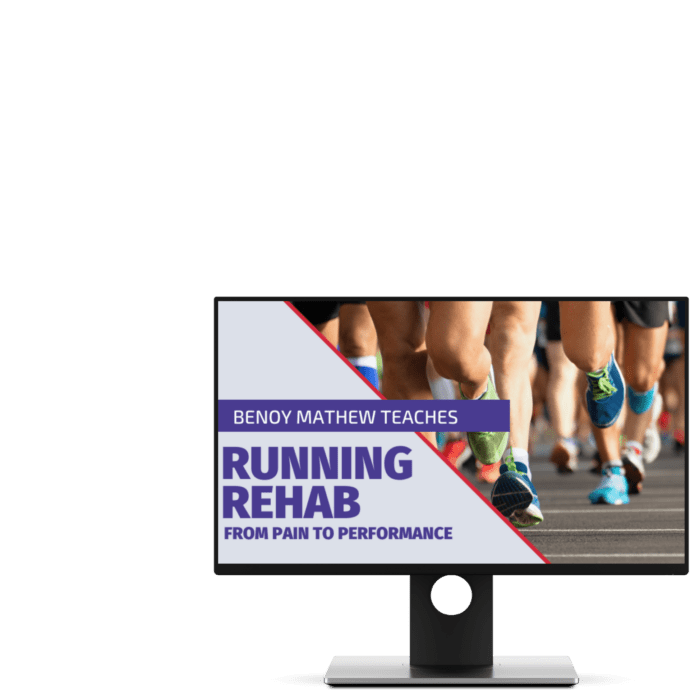Tarsal Tunnel Syndrome | Diagnosis & Treatment

Tarsal Tunnel Syndrome | Diagnosis & Treatment
Introduction & Pathophysiology
Tarsal tunnel syndrome is also known as tibial nerve dysfunction and posterior tibial nerve neuralgia. It is an entrapment neuropathy caused by the compression of tissues within the tarsal tunnel. The tarsal tunnel is a thin fibro-osseous cavity behind and beneath the medial malleolus. It is formed by the medial malleolus anterosuperiorly, by the posterior talus and calcaneus laterally, and is held against the bone by the flexor retinaculum. Post-traumatic, biomechanical, inflammatory, and morphological disorders are the most common intrinsic and extrinsic aetiologies of tarsal tunnel syndrome.
Pathomechanism
An entrapment or impingement issue of the posterior tibial nerve or the continuation into the medial and lateral plantar nerve is thought to be causing the symptoms. The entrapment is characterized by increased pressure at the boundaries of the tarsal tunnel. Anything that reduces the space within this passage can cause the pressure to increase. Symptoms may thus also emerge as a result of the development of space-occupying lesions within the tarsal tunnel.
The tarsal tunnel forms a passage for the posterior tibialis tendon, the flexor digitorum longus (FDL) tendon, and the flexor hallucis longus (FHL) tendon. Accompanying these tendons, the posterior tibial artery and vein, and the posterior tibial nerve (L4-S3), also pass through it. The posterior tibial nerve bifurcates into the medial and lateral plantar nerve. In some people, this intersection occurs before the passage through the tarsal tunnel, in some the posterior tibial nerve splits in the tarsal tunnel. The medial calcaneal branch comes from the posterior tibial nerve just proximal from the flexor retinaculum.
Multiple causative factors have been described, which can be divided into intrinsic and extrinsic mechanisms. Among the intrinsic causes is the presence of anatomical muscle variants. One of the extrinsic causes is external pressure which restricts blood flow in the arteries that supply the tibial nerve, resulting in local ischemia. Ankle trauma or inflammation is also described.
Epidemiology
Yammine et al., (2022) found that the prevalence of tarsal tunnel syndrome was 9% in people with anatomical muscle variants or accessory muscles. Tarsal tunnel syndrome is more frequently reported in women and occurs more in adults. The exact incidence is unknown. Tarsal tunnel syndrome is more common among athletes and persons who are prone to lengthy weight-bearing periods inclusive of standing, walking, or strenuous physical activity.
Follow a course
- Learn from wherever, whenever, and at your own pace
- Interactive online courses from an award-winning team
- CEU/CPD accreditation in the Netherlands, Belgium, US & UK
Clinical Presentation & Examination
The typical symptoms are dysesthesia, paresthesia, and sometimes hyperesthesia along the course of the posterior tibial nerve in the tarsal tunnel or at the borders of the tarsal tunnel. However, the symptoms can be vague and difficult to localize. The symptoms often progress throughout the day and may also lead to cramping of the medial plantar fascia. In some cases, pain may also extend proximally to the mid-calf region with the percussion of the nerve at the site of entrapment, a finding known as Valleix phenomenon. Sometimes, night pain may be present.
Depending on the location of the bifurcation of the posterior tibial nerve, the location of the symptoms can be limited to the medial ankle region or can extend more posterior to the calcaneus or more distally to the plantar aspects of the foot.
Examination
There is no definite diagnostic standard but a thorough history and clinical examination may increase the suspicion for the presence of tarsal tunnel syndrome. During the inspection and the active examination, you may see a flatfoot deformity or a pronated foot. Atrophy, weakening of the intrinsic foot muscles, and toe contractures may be observed in chronic situations. Abnormalities in gait should be evaluated, such as excessive pronation or supination, toe eversion, excessive foot inversion or eversion, and antalgic gait.
The following clinical tests can be conducted to determine the possibility of the presence of tarsal tunnel syndrome.
- A positive Tinel sign and objective sensory loss along the distribution of the tibial nerve can give a clue for the presence of tarsal tunnel syndrome.
- The Dorsiflexion-Eversion test for an increase in tenderness has good diagnostic accuracy. This test could be of value when your patient indicates the presence of pain or paresthesia when they are in the toe-off phase of the gait cycle.
- The Triple Compression Stress test was reported with high specificity. The foot position is thought to put the posterior tibial nerve under stress.
As with any neuropathy, quantitative sensory testing can be performed. The primary goal of qualitative sensory testing is to determine pain mechanisms by assessing the functionality of large and tiny sensory nerve fibers. By using heat, vibratory, and painful stimuli you could objectify sensory disturbances.
Differential Diagnosis
- Diabetic (poly)neuropathy
- Mass-occupying lesions within the tarsal tunnel
- L3-S1 nerve root syndrome
- Proximal tibial nerve injury/entrapment
- Radiculopathy
- Posterior Tibialis Tendon Dysfunction
- Plantar Fasciitis and bursitis
- Calcaneal stress fracture
- Compartment syndrome of the deep flexor compartment
- Tenosynovitis of the FHL and FDL
Follow a course
- Learn from wherever, whenever, and at your own pace
- Interactive online courses from an award-winning team
- CEU/CPD accreditation in the Netherlands, Belgium, US & UK
Treatment
Conservative therapy and outcome differ depending on the cause of tarsal tunnel syndrome. The objective is to reduce pain, inflammation, and tissue stress. It is possible to use ice and analgesics and nonsteroidal anti-inflammatory medications (NSAIDs) can be useful. Activity modification is also useful in symptom management.
Calf stretching and nerve gliding can aid in alleviating symptoms. Tibialis posterior strengthening and a medial heel wedge or heel seat may lessen traction on the nerve by inverting the heel. Targeting the intrinsic foot muscles to improve navicular drop and strengthen the longitudinal foot arch is necessary and an appropriate shoe supporting the arch provides passive support. Kinesiology tape can be used to support the arch and reduce biomechanical stress.
In case a ganglion cyst is causing compression of the posterior tibial nerve, it can be aspirated under ultrasound guidance. Injections of corticosteroids into the tarsal tunnel may help when edema is the causative factor. If conservative treatment fails to relieve the patient’s symptoms or a specific cause of entrapment is found, surgery is recommended. Slow EMG posterior tibial nerve conduction is a sign that conservative treatment will not be successful. Patients suffering from symptoms caused by a space-occupying lesion usually react successfully to surgical treatment. Then the flexor retinaculum is released from its proximal attachment near the medial malleolus down to the sustentaculum tali.
Would you like to learn more about Tarsal Tunnel Syndrome? Check out the following resources:
- Exercises for activation of the intrinsic foot muscles – Research Review
- Rheum or Tendinopathy? – Webinar
- The Big 3 – Advanced Rehabilitation of Hamstring, Quadriceps, and Calf Muscle- and Tendon Injuries
References
Follow a course
- Learn from wherever, whenever, and at your own pace
- Interactive online courses from an award-winning team
- CEU/CPD accreditation in the Netherlands, Belgium, US & UK
Running Expert Reveals His 5 Step Formula to Become a Running Rehab Specialist!


What customers have to say about this course
- gustaf hübinette05/02/25A fantastic course A fantastic and comprehensive course that I feel has both broadened and deepened my knowledge of running-related injuries and their rehabilitation. The content maintains a clear and cohesive structure, firmly grounded in research. A big plus is that even after completing the course, you can revisit the material whenever you need to review certain areas.Simon20/01/25Good, but too much! It's of course a luxury problem. It delivers, absolutely. I know a lot more about running injuries now. But you need to review how much time it takes to finish this monster.
- Salih Kuzal30/12/24Running Rehab Salih Kuzal Een hele leuke uitgebreide cursus wat goed toepasbaar is in de dagelijkse praktijk. Heb er veel van geleerd!Sander Wierstra27/12/24Leerzame cursus Deze cursus heeft me inzicht gegeven om topatleten en sporters beter te begeleiden richting een duurzame herstel, ik raad deze cursus zeker aan!
- Jaime van der Lugt27/12/24Running Rehab 2.0 Well organised and clear set-up course to dive deeper into Running Rehab. Very extensive. Would definitely recommend it!Jasper Campfens24/12/24Top cursus Erg sterke cursus. Zeer uitgebreid wordt er ingegaan op alle meest voorkomende hardloopblessures. Van diagnose tot RTR.
- Carmen21/12/24Running Rehab Very good en clear course!Thorin21/12/24Sterke aanrader! Zeer uitgebreide cursus over een grote populatie binnen de bevolking. Elke kinesitherapeut zal hier veel uit bijleren, of hij nu zelf aan lopen doet of niet! Gestructureerde cursus bestaande uit Evidence-Based teksten en video's. Duidelijke toepassing van de theorie terug te vinden in de video's.
- Ivo Rigter03/12/24Running Rehab: From Pain to Performance Bedankt voor de zeer uitgebreide en informatieve cursusEllen Oosting27/11/24Veel geleerd! Veel geleerd over blessures, behandeling, training en terugkeer naar sport. Afwisselende inhoud. Veel praktische tools. Punten ook snel bijgeschreven na afronding.
- Olivier19/11/24Goede cursus! Ik kan deze cursus alle fysiotherapeuten aanraden!Joas de Bijl07/11/24Fijne cursus Goede cursus waar wetenschap en klinische ervaring in terug komt. Leuke video’s die wat mij betreft goed aansluiten op de praktijk!
- Koen24/10/24Leerzame Cursus Een cursus die een absolute bijdrage levert voor therapeuten die veel patiënten zien met hardloopblessures.
Vooral de praktische tips en de opbouw na een blessure zijn erg bruikbaar en toepasbaar in een eerste lijn praktijk.
Tevens zijn de evidence based artikelen een mooie toevoeging op de kennis die al wordt gegeven.Tim14/10/24Great course Learned a lot about running injuries. So much more structure in assessing and treating all lower limb injuries. - Maria Kramer14/10/24Running Rehab: From Pain to Performance Goede cursus voor therapeuten die veel hardloopblessures behandelen en hier meer over willen weten. Veel evidence based informatie en praktische tips voor de opbouw na een blessure.Emin Yildiz26/08/24Running Rehab: From Pain to Performance Leerzaam, uitleg en inhoud van top kwaliteit!
- Daniel Deyhle02/02/24Running Rehab: From Pain to Performance A VERY DETAILED COURSE
Really nice! Lot´s of high quality content! I learned so much. Thank you!Jarne Standaert18/04/23Running Rehab: From Pain to Performance Dit is een uitstekende cursus voor therapeuten die patiënten met loopblessures gerichter en efficiënter willen behandelen. Je krijgt enerzijds een uitgebreid overzicht van welke loopgerelateerde blessures zich vaak voordoen. Anderzijds krijg je een goed onderzoekskader om de tekorten bij je patiënten op te sporen en dus ook gerichter te behandelen. De cursus is heel duidelijk. Je krijgt ook een goed beeld van welke oefentherapie je best toepast in een bepaald stadium van een bepaalde pathologie - Hannah Yelin09/04/23Running Rehab: From Pain to Performance A great course that gives you a comprehensive and detailed knowledge of various running complaints. The content is evidence based and the literature is attached. It is very well taught how to transfer the evidence into everyday practice. I highly recommend this course to all physios who work with runners.
Thank you for a great course!Ruba Al Barghouthi23/10/22Running Rehab: From Pain to Performance Very informative course. Highly recommended for every MSK Physiotherapist and any other health care providers who deal with runners.







